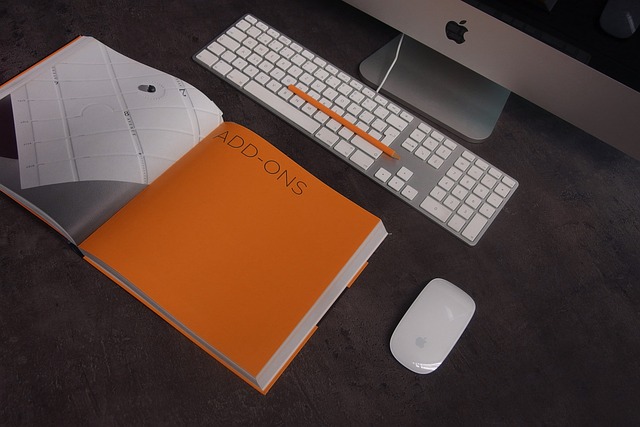In today's digital era, web designers must stay current with latest web design trends to create visually appealing, user-friendly websites that drive growth. These trends prioritize responsive design, minimalist aesthetics, and interactive elements for improved UX and SEO. Accessibility is a key focus, ensuring inclusivity. Effective content creation strategies balance readability and search engine optimization. Trends range from minimalism to cluttered designs, both offering unique advantages. Interactive elements enhance engagement while optimizing website performance boosts user experience and rankings. Staying ahead of these changes ensures websites remain competitive in the fast-paced digital landscape.
In the dynamic realm of digital interaction, web design best practices continuously evolve to captivate users and enhance online experiences. As the latest web design trends emerge, understanding the interplay between visual aesthetics and user experience becomes paramount. This article navigates the evolving landscape by exploring essential aspects such as responsive design for diverse screens, accessibility initiatives, content optimization for SEO, navigation mastery, and the delicate balance between minimalism and clutter. Discover how interactive elements and performance optimization further elevate user engagement and overall website effectiveness in line with the latest web design trends.
Understanding the Evolving Landscape of Web Design

The landscape of web design is a dynamic and ever-evolving realm, shaped by technological advancements and shifting user preferences. Staying abreast of the latest web design trends is paramount for creating engaging and effective digital experiences. In today’s digital era, users expect websites to be not just functional but visually appealing, intuitive, and optimized for various devices. The competition among businesses has intensified, making it crucial for designers to stay ahead of the curve.
By embracing the latest web design trends, such as responsive design, minimalist aesthetics, and interactive elements, professionals can craft user-centric interfaces that enhance engagement and drive conversions. Keeping up with these changes allows designers to create websites that not only meet but exceed user expectations, ensuring a solid online presence for businesses in this fast-paced digital world.
Incorporating Latest Trends: Visual Aesthetics and User Experience

In the ever-evolving landscape of web design, staying abreast of the latest trends is paramount. Incorporating modern visual aesthetics not only catches the eye but also significantly influences user experience (UX). The latest web design trends prioritize clean lines, minimalistic designs, and intuitive navigation—elements that enhance usability and keep visitors engaged. By embracing these trends, designers can create visually appealing websites that effectively communicate information while ensuring a seamless and enjoyable browsing experience.
Moreover, aligning with the latest trends ensures your website remains competitive in an increasingly crowded digital space. Trends like responsive design, interactive elements, and the strategic use of color and typography not only reflect current user preferences but also cater to diverse devices and screen sizes. This adaptability is crucial for maintaining high user satisfaction and encouraging longer visits, ultimately contributing to better conversion rates and business growth.
Responsive Design: Adapting to Diverse Screens

In today’s digital landscape, where users access websites from a myriad of devices – desktops, tablets, and smartphones – responsive design has emerged as a crucial aspect of the latest web design trends. It ensures that your website seamlessly adapts to different screen sizes, resolutions, and orientations, providing an optimal viewing experience regardless of the user’s device. By employing flexible grids, fluid images, and media queries, developers create dynamic layouts that adjust dynamically, ensuring content remains legible and easily navigable on all platforms.
This approach not only enhances usability but also boosts search engine optimization (SEO) rankings. Google, for instance, favors mobile-friendly websites in its search results, making responsive design an indispensable strategy. Moreover, a responsive site contributes to better user engagement, higher conversion rates, and increased customer satisfaction – all vital elements for any successful online presence in the competitive world of web design trends.
Accessibility: Making Websites Inclusive for All

In the realm of web design, ensuring accessibility is not just a moral imperative but also a key aspect of the latest web design trends. By making websites inclusive for all users, regardless of their abilities or disabilities, designers can significantly enhance user experience and engagement. This involves implementing features like semantic HTML, which improves screen reader compatibility, and providing alternative text for images to assist visually impaired visitors.
Responsive design is another critical component of accessibility. With the ever-evolving digital landscape, it’s essential that websites adapt seamlessly to different screen sizes and devices. This means considering mobile users who may have limited mobility or vision, ensuring their access isn’t compromised. The latest web design trends prioritize these aspects, fostering a more inclusive online environment where everyone can navigate, understand, and interact with content effectively.
Content is King: Optimizing for SEO and Readability

In the realm of web design, content is indeed king. With the ever-evolving landscape of digital experiences, creating compelling and optimized content is paramount to engage users and outshine competitors in the latest web design trends. Search Engine Optimization (SEO) plays a pivotal role here, as it ensures your website ranks higher on search engine results pages, drawing organic traffic. This involves using relevant keywords, crafting informative meta descriptions, and structuring content for both humans and search engines to understand.
Readability is another critical aspect that goes hand in hand with SEO. Presenting content in a clean, well-organized format enhances user experience. Break down text with headings, subheadings, and bullet points to make it easily digestible. Use visual elements like images and videos to support your content, ensuring they are optimized for faster loading times. Balancing SEO best practices with readability ensures your website not only attracts visitors but also keeps them engaged and returning for more.
Navigation Mastery: Simplifying Complex Information

Minimalism vs Clutter: Striking the Right Balance

In the realm of web design, the eternal struggle between minimalism and clutter is a delicate balance to strike. The latest web design trends often gravitate towards minimalist aesthetics, emphasizing clean lines, ample white space, and concise content. This approach enhances user experience by reducing visual noise and allowing key elements to stand out. A minimalist design can make navigation intuitive, ensuring users focus on what matters most—the information or functionality presented.
However, entirely devoid designs can sometimes feel incomplete or lack personality. Clutter, when managed effectively, can bring a dynamic energy to a website. It involves strategic placement of various visual elements, including images, icons, and text, to create interest and guide the user’s eye. The key is moderation; balancing well-placed elements with negative space ensures the website remains uncluttered yet visually engaging. This balance ultimately determines whether a website feels modern, inviting, and optimized for today’s digital landscape.
Interactive Elements: Enhancing User Engagement

In today’s digital landscape, interactive elements play a pivotal role in capturing and retaining user attention. The latest web design trends emphasize creating dynamic and engaging experiences that go beyond static content. By integrating interactive features such as hover effects, animations, and responsive forms, designers can foster a deeper connection with visitors, encouraging them to explore and interact.
These interactive elements not only enhance visual appeal but also serve as effective navigation tools, making sites more user-friendly. They can guide users through different sections, provide instant feedback, and create a sense of immersion, thereby increasing engagement and improving overall website performance. By staying atop the latest web design trends, professionals ensure their creations remain competitive and captivating in the digital arena.
Performance Optimization: Speeding Up Load Times

In today’s digital landscape, performance optimization is a crucial aspect of modern web design that cannot be overlooked. One of the key factors in enhancing user experience is ensuring your website loads swiftly. With users growing increasingly impatient, even slight delays can lead to higher bounce rates and lower engagement. To combat this, developers should focus on optimizing images, leveraging browser caching, minifying code, and utilizing content delivery networks (CDNs). Implementing these strategies aligns with the latest web design trends, guaranteeing a seamless browsing experience that keeps visitors captivated.
Speeding up load times not only improves user satisfaction but also boosts search engine rankings. Google, for instance, has explicitly stated that page speed is a ranking factor. By employing performance optimization techniques, web designers can ensure their sites deliver content quickly, making them more competitive and relevant in the ever-evolving online arena.
